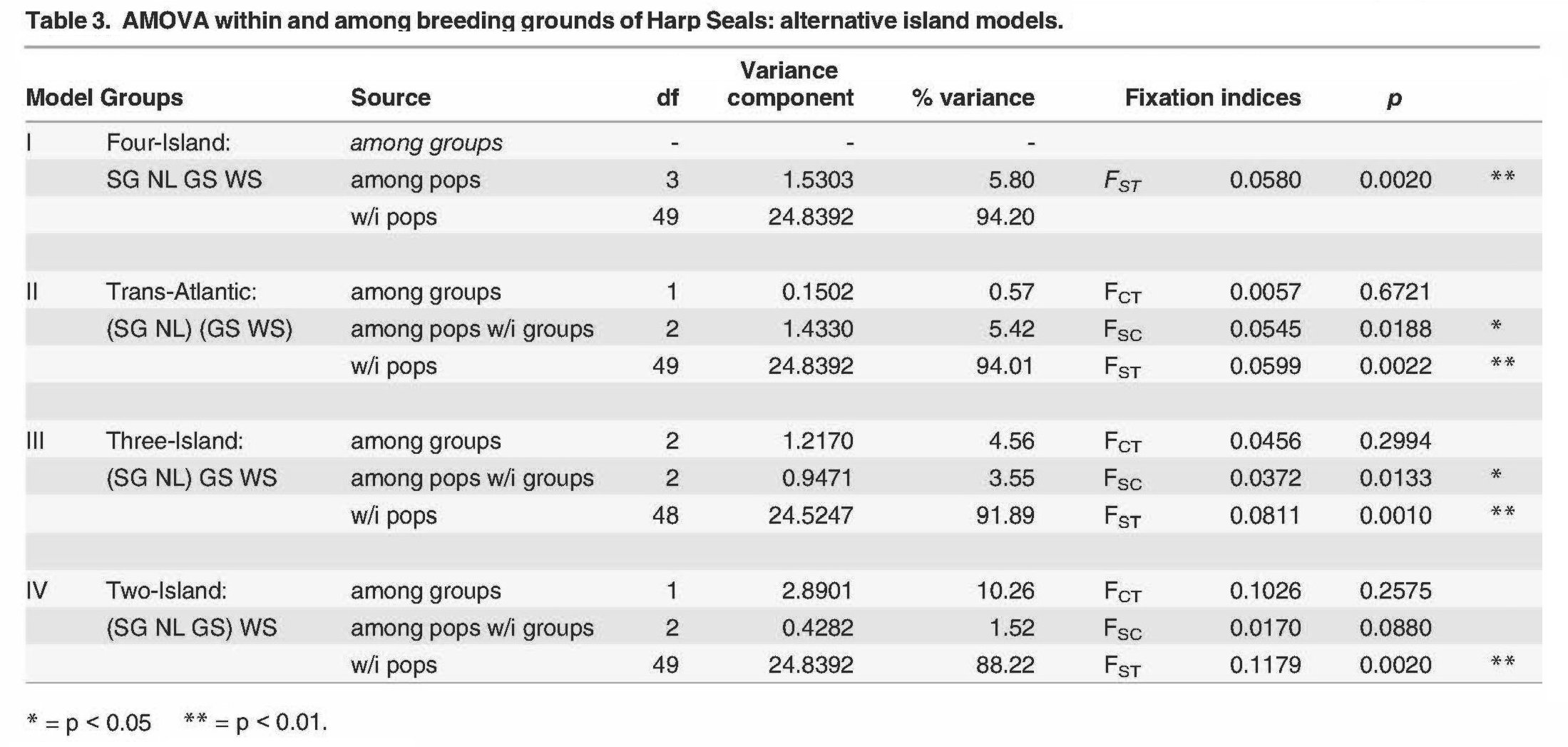
Analysis of Molecular Variance (AMOVA)
among four breeding grounds of Harp Seals (Pagophilus groenlandicus)
Harp Seals breed in only four areas of the North Atlantic
and adjacent waters. In the western Atlantic, these are the
Newfoundland / Labrador Ice Front (NL) and the
southern Gulf of Saint Lawrence (GS).
These two areas are separated by the Strait of Belle
Isle at the tip of the Northern Peninsula of
Newfoundland, as well as the freshwater outflow of the St.
Lawrence River. In the Eastern Atlantic, breeding
populations occur at Jan Mayen Island in the
Greenland Sea (GS) east of Greenland, and in the White
Sea (WS) east of the Kola Peninsula.
Over-hunting of the Jan Mayen population in the early 20th
century reduced its numbers to a small fraction of its
former size. The extent to which gene flow connects the
western and eastern pairs, and allows trans-Atlantic
exchange, have been long-standing questions.
An Analysis of Molecular Variance (AMOVA) is similar to a conventional Analysis of Variance (ANOVA), where the variance is DNA sequence variability. Harp Seals lend themselves well to AMOVA, because explicit a priori island models of gene flow can be tested and compared. Model I shows that a significant fraction (0.0580, p < 0.05) of the variance occurs among populations taken separately, consistent with genetic isolation by distance. Model III, which combines the two western populations and leaves the two eastern populations separate, shows a fraction (0.0456) among groups, and a fraction (0.0372, p < 0.05) among populations within groups.
An Analysis of Molecular Variance (AMOVA) is similar to a conventional Analysis of Variance (ANOVA), where the variance is DNA sequence variability. Harp Seals lend themselves well to AMOVA, because explicit a priori island models of gene flow can be tested and compared. Model I shows that a significant fraction (0.0580, p < 0.05) of the variance occurs among populations taken separately, consistent with genetic isolation by distance. Model III, which combines the two western populations and leaves the two eastern populations separate, shows a fraction (0.0456) among groups, and a fraction (0.0372, p < 0.05) among populations within groups.